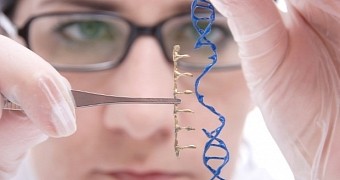Drug cocktails and surgery have for decades now been the go-to treatment for all sorts of diseases and disorders. Still, a new treatment option is now in the making, and if scientists get it right, it might just establish itself as a proper therapy for illnesses that, at least for now, have no known cure.
This emerging treatment option is called gene therapy and it boils down to altering the genetic makeup of cells in a patient’s body in an attempt to treat or prevent disease.
Gene therapy could make it possible to replace a mutated gene known to cause disease with a healthy copy, completely knock out a faulty gene or simply introduce a new gene designed to fight a specific disease. Viral infections, some forms of cancer, and inherited disorders could be treated this way.
The glitch
Because of their very nature - they are extraordinarily gifted at sneaking into their host organism and inserting their genetic material into its cells - viruses make the perfect delivery vehicle for gene therapy, scientists explain.
Thus, they can be made to carry therapeutic genes and insert them into specific cells. This genetic transfer facilitated by viruses could help tackle all sorts of diseases.
The problem is that, since viruses are usually no good, our body's immune system has evolved to block their access to cells and destroy them. In the case of gene therapy, this also means making mincemeat of the good genes they carry.
The solution
To trick the immune system and ensure the success of gene therapy, researchers at the Massachusetts Eye and Ear Infirmary have resurrected an ancient virus that, being unknown to our immune system, should simply be ignored and allowed to pass through in the body.
When injected into mice, the virus, dubbed Anc80, successfully reached the animals' liver, muscle and retina and did not trigger any severe side effects. Based on the structure of this virus, the scientists now wish to engineer new ones that can deliver gene therapy to organs in the human body.
“From this knowledge, we hope to design next-generation viruses for use as vectors in gene therapy. The vectors developed and characterized in this study demonstrate unique and potent biology that justify their consideration for gene therapy applications,” said scientist Luk H. Vandenberghe.

 14 DAY TRIAL //
14 DAY TRIAL //